-
A Seattle quake may cause more damage than expected to reinforced concrete
Using ground motions generated for a range of simulated magnitude 9 earthquakes in the Pacific Northwest, researchers are testing how well reinforced concrete walls might stand up under such seismic events. The walls may not fare so well, especially within the city of Seattle, the researchers say.
-
-
Forest fires accelerating snowmelt across western U.S., affecting water supplies
Forest fires are causing snow to melt earlier in the season, a trend occurring across the western U.S. that may affect water supplies and trigger even more fires, according to a new study. It is a cycle that will only be exacerbated as the frequency, duration, and severity of forest fires increase with a warmer and drier climate.
-
-
The why, how, where, and what of earthquake early warning
Earlier this year, Los Angeles became one of the first cities in the country to roll out ShakeAlert – a dedicated earthquake early warning system. Advanced warning of an earthquake has long been a goal for everyone from seismologists to local governments. Especially in cities like Los Angeles, located along the notorious San Andreas fault. But what about cities like Seattle?
-
-
Fracking Linked to earthquakes in the Central and Eastern United States
Small earthquakes in Ohio, Pennsylvania, West Virginia, Oklahoma and Texas can be linked to hydraulic fracturing wells in those regions, according to researchers. While relatively rare compared to earthquakes caused by wastewater disposal in oil and gas fields in the central United States, the researchers have identified more than 600 small earthquakes (between magnitude 2.0 and 3.8) in these states.
-
-
“Metamaterials” may mitigate earthquake damage

In the past decade scientists have been experimenting with metamaterials, artificial materials designed with periodic internal structures to give them properties not found in natural materials. Some of these materials can control waves propagating through them, filtering sound or deflecting light so that an object appears “cloaked” or invisible, for instance. Could this same principle be applied to controlling seismic waves?
-
-
Mozambique hit by another unprecedented tropical cyclone
A few weeks after Cyclone Idai which wreaked havoc on central Mozambique (and eastern Zimbabwe), the country is dealing with another unprecedented event. Tropical Cyclone Kenneth made landfall in northern Mozambique on 25 April, near the border with Tanzania, in an area where no tropical cyclone has been observed since the satellite era. There is no record of two storms of such intensity striking Mozambique in the same season. It has now weakened into a depression.
-
-
California: Coastal impacts of climate change
The United States Geological Survey (USGS) says that sea-level rise is going to wreak widespread destruction on California’s coastal communities, unless these communities take urgent action to mitigate to risks. “Even the storms today have significant risk to California’s coastline,” said Patrick Barnard, the lead author of the study. “There are about $12 billion in properties that are at risk of extreme storm today, but if you look out into the future, let’s say mid-century, those numbers roughly triple to about $30 billion of property at risk with just a little bit of sea level rise, and it goes up from there,” USGS researchers Patrick L. Barnard and colleagues write in Scientific Reports.
-
-
Planned burns can reduce wildfire risks, but expanding use of ‘good fire’ isn’t easy
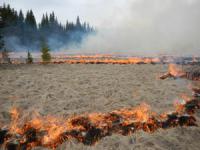
Prescribed burns can decrease the potential for some of the large, severe fires that have affected western states in recent years. As scholars of U.S. forest policy, collaborative environmental management and social-ecological systems, we see them as a management tool that deserves much wider attention.
-
-
Rapid DNA technology ID’ed California wildfire victims
Amid the chaos and devastation of a mass casualty evet, medical examiners often provide closure as they identify victims in the aftermath, but their ability to do this quickly can vary depending on the size, scope, and type of disaster. Such challenges were the case following the Camp Fire wildfire that killed eighty-five people and devastated communities in Paradise, California, in the fall of 2018. S&T’s Rapid DNA technology became the first resort as it provided identifying information in under two hours when dental records and fingerprints weren’t available.
-
-
Nuclear weapons might save the world from an asteroid strike – but we need to change the law first
The schlocky 1998 Bruce Willis movie Armageddon was the highest grossing film of that year. The blockbuster saw a master oil driller (Willis) and an unlikely crew of misfits place a nuclear bomb inside a giant asteroid heading for Earth, blow it up – and save humanity. Armageddon isn’t exactly a documentary: it’s packed full of sci-fi nonsense. But, 20 years on, its basic plot – of using a nuclear explosion to avert a cataclysmic asteroid collision – doesn’t seem quite as silly as it did at the time.
-
-
Celestial menace: Defending Earth from asteroids
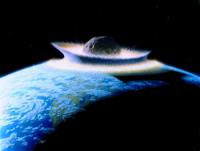
Incoming asteroids have been scarring our home planet for billions of years. This month humankind left our own mark on an asteroid for the first time: Japan’s Hayabusa2 spacecraft dropped a copper projectile at very high speed in an attempt to form a crater on asteroid Ryugu. A much bigger asteroid impact is planned for the coming decade, involving an international double-spacecraft mission.
-
-
Hurricane Maria's extreme rainfall due mostly to human-caused climate change
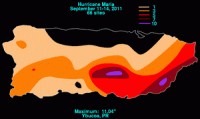
Hurricane Maria dropped more rain on Puerto Rico than any storm to hit the island since 1956, a feat due mostly to the effects of human-caused climate warming, new research finds.
-
-
Climate change: Our greatest national security threat?
The climate century is here: the earth is warming, humans are to blame, and we must take immediate action now to prepare for climate change’s massively disruptive consequences. Mark Nevitt writes in Just Security that No longer can climate change be categorized solely as an environmental issue—it is a grave threat to national security. Indeed, it may be the threat. While there are many national security challenges facing the nation and the world, climate change is an aptly described “super wicked” problem that exacerbates and accelerates already existing threats.
-
-
Environmental “secondary perils” an increasing threat: Swiss Re
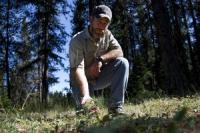
The catastrophe loss experience of the last two years is a wake-up call for the insurance industry, highlighting a trend of growing devastation wreaked by so-called ‘secondary perils’ – which are independent small to mid-sized events, or secondary effects of a primary disaster.
-
-
Defending the Earth from asteroids
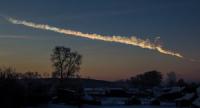
A mere 17-20 meters across, the Chelyabinsk meteor caused extensive ground damage and numerous injuries when it exploded on impact with Earth’s atmosphere in February 2013. To prevent another such impact, researchers use a simple yet ingenious way to spot these tiny near-Earth objects (NEOs) as they hurtle toward the planet.
-
- All
- Regional
- Water
- Biometrics
- Borders/Immig
- Business
- Cybersecurity
- Detection
- Disasters
- Government
- Infrastructure
- International
- Public health
- Public Safety
- Communication interoperabillity
- Emergency services
- Emergency medical services
- Fire
- First response
- IEDs
- Law Enforcement
- Law Enforcement Technology
- Military technology
- Nonlethal weapons
- Nuclear weapons
- Personal protection equipment
- Police
- Notification /alert systems
- Situational awareness
- Weapons systems
- Sci-Tech
- Sector Reports
- Surveillance
- Transportation
Advertising & Marketing: advertise@newswirepubs.com
Editorial: editor@newswirepubs.com
General: info@newswirepubs.com
2010-2011 © News Wire Publications, LLC News Wire Publications, LLC
220 Old Country Road | Suite 200 | Mineola | New York | 11501
Permissions and Policies
Editorial: editor@newswirepubs.com
General: info@newswirepubs.com
2010-2011 © News Wire Publications, LLC News Wire Publications, LLC
220 Old Country Road | Suite 200 | Mineola | New York | 11501
Permissions and Policies
